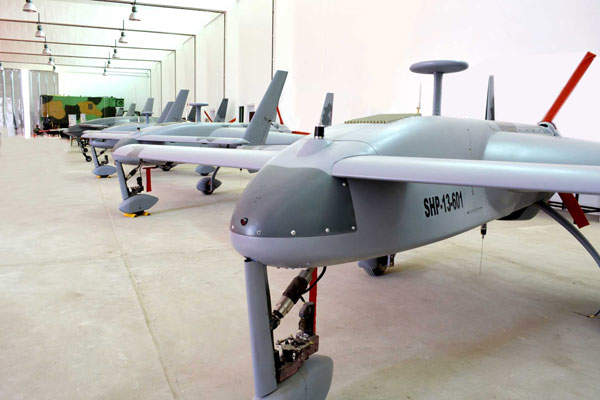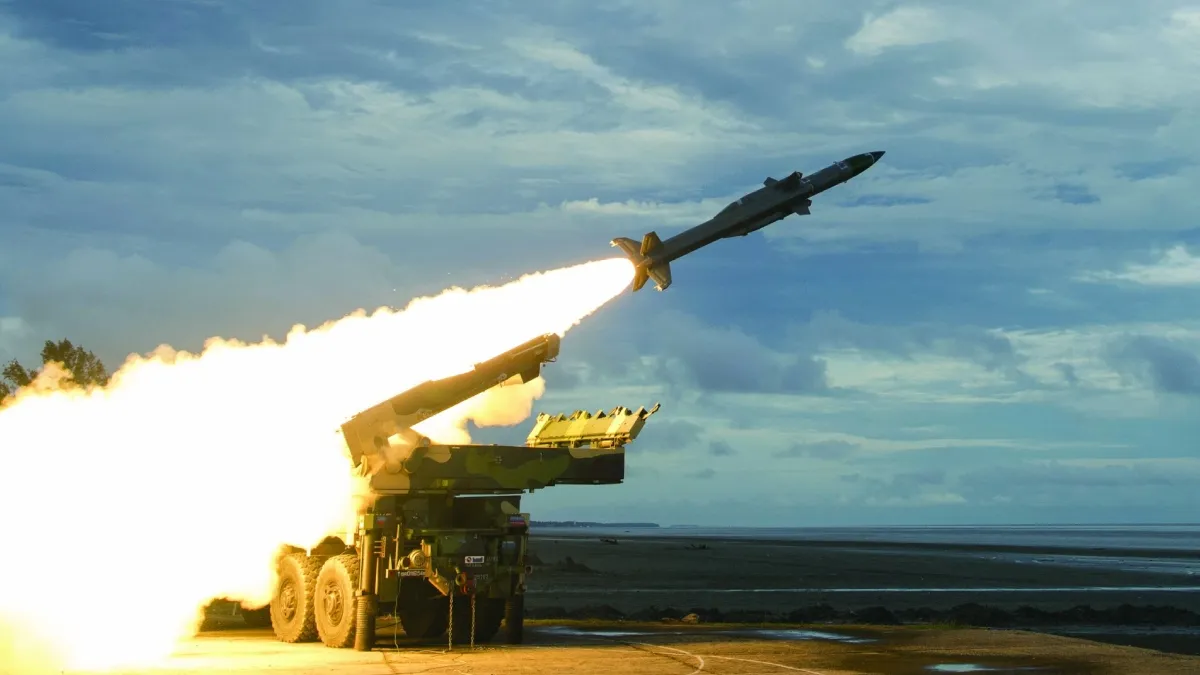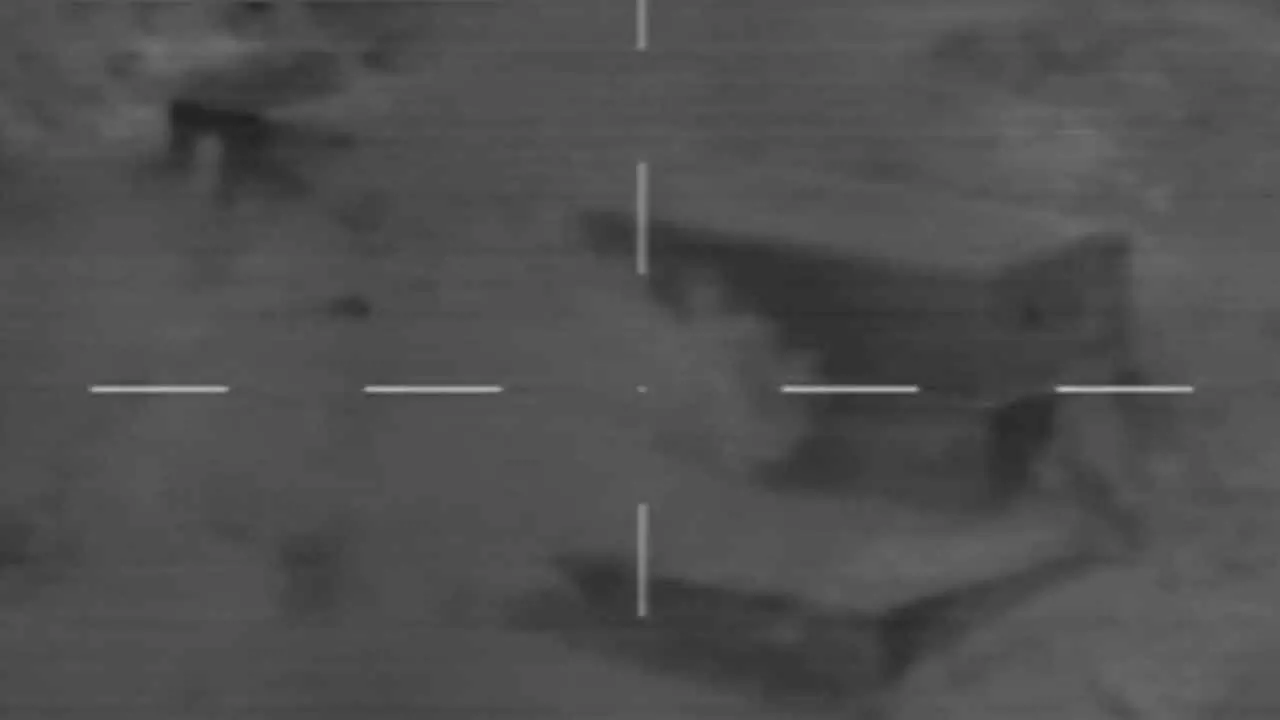SOURCE: IDRW.ORG


A nearly intact Chinese-made PL-15E Beyond Visual Range Air-to-Air Missile (BVRAAM), discovered approximately 100 km inland in Punjab’s Hoshiarpur district, has been secured for detailed analysis by the Defence Research and Development Organisation (DRDO) and its associated laboratories. The find, the third such debris of the PL-15E recovered in recent days, includes critical components like the propulsion system, datalink, inertial reference unit, and active radar seeker, offering a rare opportunity to study China’s advanced missile technology.
The missile’s near-intact state has also attracted international attention, with the United States, South Korea, and Japan reportedly expressing interest in sending teams to India to examine the debris, highlighting its global strategic significance.
Continue readingSOURCE: IDRW.ORG


Debris believed to be from an S-125 Pechora Surface-to-Air Missile (SAM) was discovered near a dargah in Street No. 4 of the Beed Talab area in Bathinda, Punjab, following intense air defence operations on the night of May 8, 2025. According to the Indian Defence Research Wing (idrw.org), the debris is likely from an S-125 Pechora SAM deployed by the Indian Air Force (IAF) to neutralize a swarm of Pakistani drones targeting Indian military installations in Punjab and Jammu. The find adds to the growing list of armament debris recovered amid escalating tensions with Pakistan, highlighting the critical role of India’s air defence systems in countering cross-border threats.
The debris, found in a residential area of Bathinda, was identified by local residents near the dargah on Street No. 4, prompting a swift response from security forces. Preliminary assessments by idrw.org suggest it belongs to the S-125 Pechora, a Soviet-era SAM system still in service with the IAF for low- to medium-altitude air defence. The missile, known for its reliability against low-flying targets, was reportedly engaged to intercept Pakistani drones launched as part of a broader assault on Indian targets, including bases in Amritsar, Ludhiana, and Jammu.
Continue readingSOURCE: AFI
.jpg?w=610&q=50&compress=true&format=auto)

As tensions between India and Pakistan continue to simmer following Operation Sindoor, sources close to the Indian Air Force (IAF) have clarified that the advanced S-400 ‘Sudarshan Chakra’ air defence system is being selectively used against high-value targets, particularly Pakistan Air Force (PAF) aircraft, rather than engaging low-cost threats like drones or Multiple Launch Rocket Systems (MLRS), as speculated on social media. The S-400’s sophisticated radar systems, deployed over Punjab and Jammu, have played a pivotal role in deterring PAF aircraft, forcing them to launch payloads from ineffective distances and significantly limiting their operational success.
Contrary to social media speculation that the S-400 was primarily used to neutralize Pakistan’s drone and missile attacks on May 7-8, 2025, IAF sources emphasize that the system’s high-cost interceptors—priced at $1–2 million per missile—are reserved for “targets of interest,” such as PAF fighter jets like the J-10C or F-16, which pose significant threats to Indian airspace. “The S-400 is not designed to engage low-cost drones or MLRS, which can be effectively countered by systems like the Akash, L-70, or integrated counter-UAS grids,” a source stated. Instead, the system’s primary role has been to create a defensive umbrella that deters PAF aircraft from approaching Indian territory.
Continue readingSOURCE: AFI


Lucknow, the capital of Uttar Pradesh, is poised to become a pivotal hub for India’s defense manufacturing with the upcoming inauguration of a BrahMos supersonic cruise missile production unit. Built as a joint venture between India’s Defence Research and Development Organisation (DRDO) and Russia’s NPO Mashinostroyeniya, the BrahMos missile is a cornerstone of India’s defense arsenal, known for its speed, precision, and versatility.
The new facility, set to be inaugurated by Defence Minister Rajnath Singh on May 11, underscores India’s commitment to self-reliance in defense production and the strategic importance of the Uttar Pradesh Defence Industrial Corridor.
Continue readingSOURCE: AFI


The Pakistan Air Force (PAF) appears to have suffered a significant strategic and tactical miscalculation in its recent attempted aerial strike — a misjudgment that cost it dearly. Banking heavily on overwhelming Indian air defenses through coordinated drone swarm attacks, the PAF’s strategy aimed to create temporary windows of vulnerability in India’s Integrated Air Defence ecosystem. However, far from achieving its objectives, the operation only served to expose Pakistan’s poor understanding of India’s layered air defense network and resulted in a devastating blow to its strike capability.
At the heart of the failed operation was the assumption that swarming low-cost drones — acting as decoys or reconnaissance elements — could saturate Indian Air Defence (AD) systems, forcing them to expend interceptors and exhaust radar bandwidth. In theory, this could have temporarily blinded or distracted the IAF and Indian Army Air Defence elements, creating exploitable gaps for PAF’s manned aircraft and standoff platforms to deliver their payloads of cruise missiles and air-to-ground munitions.
Continue readingSOURCE: AFI


Sources close to the Indian Air Force (IAF), speaking to Air Force India (AFI), have confirmed that no pilots were lost during the large-scale ‘Operation Sindoor,’ a retaliatory strike conducted on May 7, 2025, targeting nine terrorist infrastructure sites in Pakistan and Pakistan-administered Kashmir. The operation, which involved an estimated 80-90 aircraft, saw the deployment of advanced weaponry, including the air-launched BrahMos supersonic cruise missile and SCALP cruise missiles. However, IAF officials refrained from confirming whether all air assets involved in the operation remained intact, fueling speculation amid conflicting claims from Pakistan.
The operation was launched in response to the April 22, 2025, Pahalgam terror attack that killed 26 civilians, primarily tourists, in Indian-administered Kashmir. Indian authorities attributed the attack to Pakistan-based terror groups Jaish-e-Mohammed (JeM), Lashkar-e-Taiba (LeT), and Hizbul Mujahideen (HM), prompting a swift and coordinated military response. According to IAF sources, ‘Operation Sindoor’ was executed with precision, targeting terror camps in locations such as Bahawalpur, Muridke, Sialkot, and Muzaffarabad, among others, within a 25-minute window. The operation utilized Rafale jets equipped with SCALP (Storm Shadow) cruise missiles for deep-strike missions and HAMMER precision-guided munitions for medium-range targets, alongside the BrahMos air-launched variant deployed from modified Su-30MKI fighters.
Continue readingSOURCE: AFI


Recent cross-border strikes targeting militant infrastructure deep within Pakistan’s Punjab province have sent a resounding message, not just to the terror networks operating with impunity but also to the highest echelons of Pakistan’s military establishment. For General Asim Munir, the Chief of Army Staff, these developments should serve as a serious wake-up call regarding the growing impatience of neighboring states with Pakistan’s duplicity on terrorism.
Historically, Pakistan’s Punjab province has been portrayed as a relatively secure heartland, far from the volatility of the tribal regions or Balochistan. However, the presence of key leadership and logistical support systems for various extremist outfits in Punjab has long been an open secret. Recent precision strikes that reportedly hit key facilities linked to terror networks within this region challenge the very notion of a “safe haven” and expose vulnerabilities previously deemed off-limits.
Continue readingSOURCE: ANI


The indigenously developed Akash surface-to-air missile air defence system has played a crucial role in thwarting Pakistani drone attacks targeting Indian assets on Thursday, according to defence officials. The Indian Army during the intervening night of May 8 and May 9 has successfully repelled and responded to multiple drone attacks by Pakistan along the western border and the Line of Control (LoC) in Jammu and Kashmir.
Officials added that both the Indian Army and Air Force have deployed the missile system along the Pakistan border. “The Made in India Akash surface-to-air missile air defence system has been effectively used by the Indian armed forces in foiling Pakistani attacks towards Indian targets. Both the Indian Army and Air Force have the missile system all along the Pakistan border,” defence officials stated.
Continue readingSOURCE: IANS


The Pakistan government and its Army have found themselves at the receiving end of their citizens and Parliamentarians, after getting beaten in the war of nerves with their Indian counterpart and also losing face globally, over their brazen support to terror.
Pakistan Prime Minister Shehbaz Sharif faced major embarrassment after a Parliamentarian in his country called him out over his “cowardice”, saying the former couldn’t stand up to his Indian counterpart, Narendra Modi.
Continue readingSOURCE: IANS


US Vice-President J.D. Vance has said that the conflict between India and Pakistan is “fundamentally none of our business,” though he and President Donald Trump are encouraging both the countries to de-escalate.
“What we can do is try to encourage these folks to de-escalate a little bit, but we’re not going to get involved in the middle of war that’s fundamentally none of our business and has nothing to do with America’s ability to control it. You know, America can’t tell the Indians to lay down their arms. We can’t tell the Pakistanis to lay down their arms. And so, we’re going to continue to pursue this thing through diplomatic channels,” Vance, who has been a proponent of US disengagement from international conflicts, said in an interview with Fox News.
Continue readingSOURCE: IANS


The Indian Army has released the first video of a strike carried out at a Pakistani military post, responding to the cross-border firing by Islamabad troops in the face of escalating tension between the two countries.
Although the video doesn’t mention the sector where the military post was destroyed, it shows the Army’s befitting reply to the continuous ceasefire violations. The Indian Army, in a statement, said that Pakistan launched multiple attacks using drones and other munitions along the entire Western Border on the intervening night of May 8 and 9 and resorted to numerous ceasefire violations along the Line of Control (LoC) in Jammu and Kashmir, which were effectively repulsed.
Continue readingSOURCE: IANS

The unprecedented face-off at the Line of Control (LoC) and the border areas, after India destroyed nine terrorist camps in Pakistan-occupied-Kashmir (PoK) and Pakistan, saw a barrage of missiles, drones and other munitions being fired from across the border on Thursday night, but India intercepted and shot all of them in the air. Not a single missile could land on Indian territory, failing to reach intended targets.
Days ago, the Indian armed forces carried out targeted and precision strikes on key terror hubs across the border, hitting and destroying them with clinical efficiency.
Continue readingSOURCE: PTI
)

The Border Security Force on Friday said it has foiled an infiltration bid from across the India-Pakistan International Border in Jammu, killing at least seven terrorists and destroying a Rangers post.
The terrorists were engaged around 11 pm on Thursday in Samba district after a “big group” of terrorists was detected by the “surveillance grid”.This infiltration bid was supported by fire from Pakistan Rangers post Dhandhar, a BSF spokesperson said.
Continue readingSOURCE: IANS


The Ministry of Defence on Friday issued an advisory to the media to refrain from showing live coverage of defence operations and movement of security forces. In a post on its social media handle X, the Ministry said, “All media channels, digital platforms and individuals are advised to refrain from live coverage or real-time reporting of defence operations and movement of security forces.”
The MoD said that the disclosure of such sensitive or source-based information may jeopardise operational effectiveness and endanger lives.
Continue readingSOURCE: PTI


A student activist and ‘independent journalist’ from Kerala has been arrested in Nagpur for allegedly `preparing to wage war against the government of India’, an official said on Thursday. Along with Rejaz M Sheeba Sydeek (26), resident of Edapally in Kerala, his woman friend who lives in Nagpur too was arrested separately, the police said.
Sydeek, on his Instagram account, had condemned Operation Sindoor carried out by Indian Armed Forces against terror targets in Pakistan besides criticizing operations against Naxalites, the First Information Report registered at Lakadganj police station in the city claimed.
Continue reading